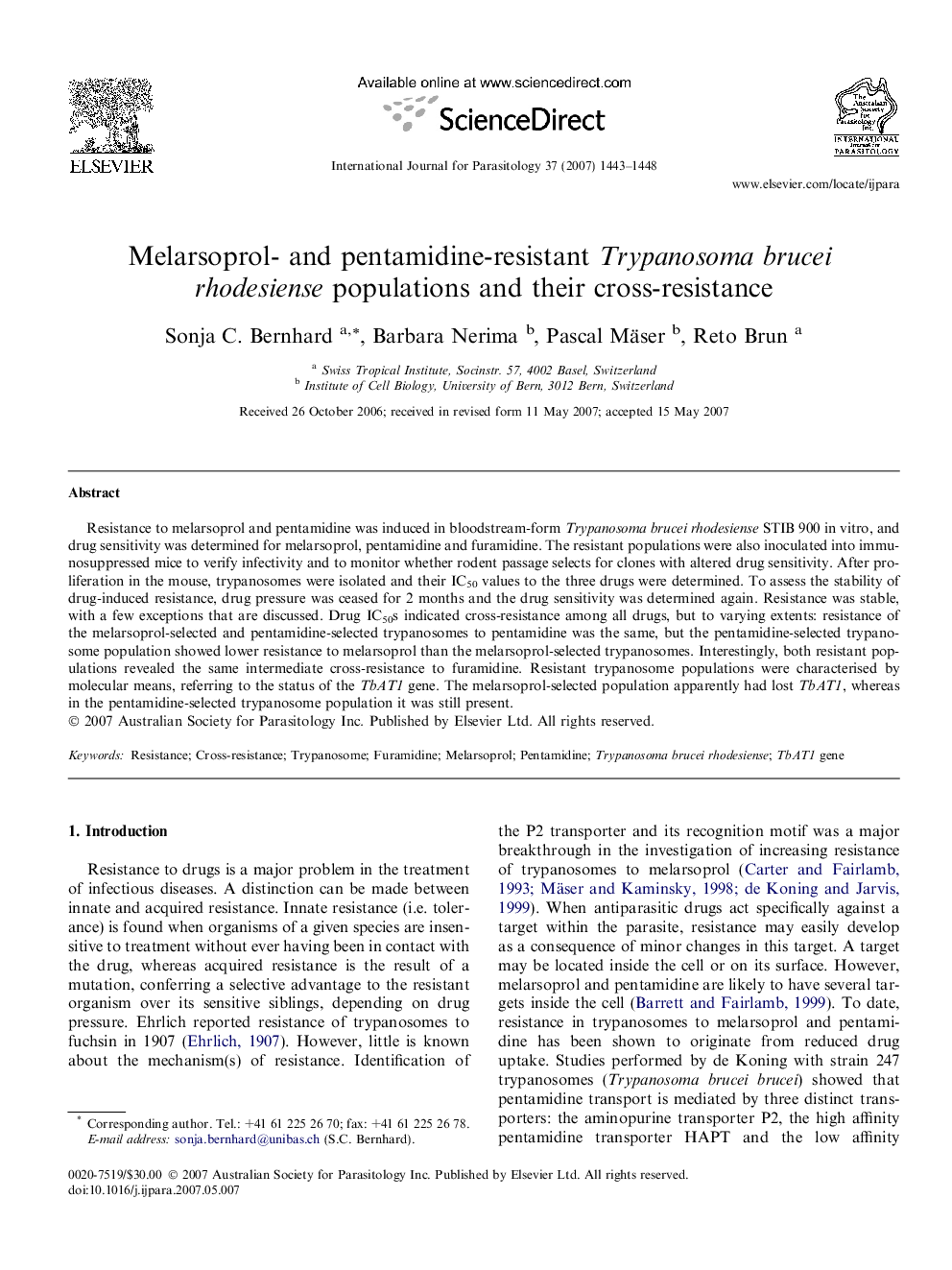| Article ID | Journal | Published Year | Pages | File Type |
|---|---|---|---|---|
| 10972959 | International Journal for Parasitology | 2007 | 6 Pages |
Abstract
Resistance to melarsoprol and pentamidine was induced in bloodstream-form Trypanosoma brucei rhodesiense STIB 900 in vitro, and drug sensitivity was determined for melarsoprol, pentamidine and furamidine. The resistant populations were also inoculated into immunosuppressed mice to verify infectivity and to monitor whether rodent passage selects for clones with altered drug sensitivity. After proliferation in the mouse, trypanosomes were isolated and their IC50 values to the three drugs were determined. To assess the stability of drug-induced resistance, drug pressure was ceased for 2 months and the drug sensitivity was determined again. Resistance was stable, with a few exceptions that are discussed. Drug IC50s indicated cross-resistance among all drugs, but to varying extents: resistance of the melarsoprol-selected and pentamidine-selected trypanosomes to pentamidine was the same, but the pentamidine-selected trypanosome population showed lower resistance to melarsoprol than the melarsoprol-selected trypanosomes. Interestingly, both resistant populations revealed the same intermediate cross-resistance to furamidine. Resistant trypanosome populations were characterised by molecular means, referring to the status of the TbAT1 gene. The melarsoprol-selected population apparently had lost TbAT1, whereas in the pentamidine-selected trypanosome population it was still present.
Related Topics
Life Sciences
Immunology and Microbiology
Parasitology
Authors
Sonja C. Bernhard, Barbara Nerima, Pascal Mäser, Reto Brun,
